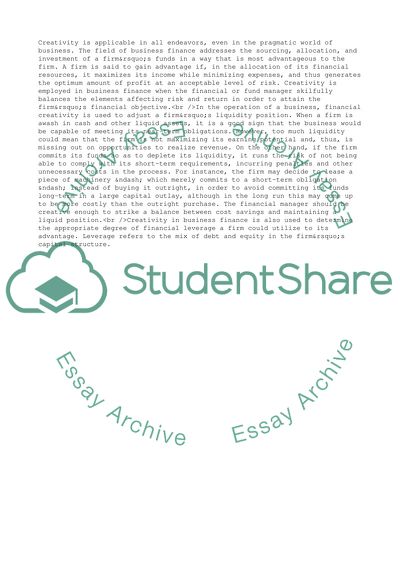Cite this document
(Creativity in Business Finance Essay Example | Topics and Well Written Essays - 2000 words, n.d.)
Creativity in Business Finance Essay Example | Topics and Well Written Essays - 2000 words. https://studentshare.org/business/1726696-creativity
Creativity in Business Finance Essay Example | Topics and Well Written Essays - 2000 words. https://studentshare.org/business/1726696-creativity
(Creativity in Business Finance Essay Example | Topics and Well Written Essays - 2000 Words)
Creativity in Business Finance Essay Example | Topics and Well Written Essays - 2000 Words. https://studentshare.org/business/1726696-creativity.
Creativity in Business Finance Essay Example | Topics and Well Written Essays - 2000 Words. https://studentshare.org/business/1726696-creativity.
“Creativity in Business Finance Essay Example | Topics and Well Written Essays - 2000 Words”. https://studentshare.org/business/1726696-creativity.


